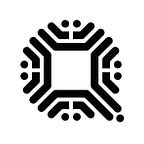The Account Abstraction Layer (AAL) is a vital component of the Qtum blockchain, bridging the gap between the Unspent Transaction Output (UTXO) model and the Accounts model.
This innovative technology enables seamless interoperability between the two models, providing users and developers with the benefits of both worlds.
With a high level of abstraction, the AAL simplifies development and expands accessibility to a wider audience.
Additionally, it enhances security by isolating private keys from the UTXO model, ensuring more secure transaction processing.
The UTXO Model
The blockchain is like a big puzzle that uses transactions as building blocks. Each transaction is either spent or unspent and there are no in-between states.
To make a transaction, you need a pair of public and private keys. The public key is where your coins go, while the private key verifies that you’re the sender.
When you make a transaction, “change” is generated. Think of it as getting change back when you pay for something with a big bill.
For example, if you have a 10 Bitcoin transaction that’s unspent and you want to send 1 Bitcoin to someone, the transaction would use up the 10 Bitcoin and generate two new ones: one for the 1 Bitcoin you sent and another for the remaining 9 Bitcoins that you get back as change.
The cryptocurrency wallet software helps you manage your funds. It’s like having your own personal banker in your pocket.
The software keeps track of all the public keys where your coins are stored and helps you access them.
You might have your holdings spread across multiple transactions, but the wallet software makes it easy to keep track of everything.
The Accounts Model
This model simplifies blockchain by using a shared database. Each user has an Account Address that stores their balance. Smart contracts can easily send or receive funds.
The state of the blockchain is maintained through this database, which allows for more advanced data structures and computing capabilities. This makes blockchain more accessible to everyone.
Comparison and Challenges
Both models for blockchain have their own challenges. The UTXO model treats coins as individual units which makes it hard to determine which ones should be used when sending value to an address.
To address this, the Account Abstraction Layer (AAL) was created by Qtum.
The AAL combines the strengths of both models to create a platform that is both secure and versatile.
With the AAL, you get the robust security and traceability of the UTXO model, as well as the flexibility and ease of use of the Accounts model.
Challenges
When using the UTXO model, it can be difficult for contracts to determine which coins to use when sending value to an address.
This is because each coin is treated as a separate unit, unlike in the Accounts model where the balance is under one account address.
Dealing with internal transactions between contracts also presents a challenge. In the UTXO model, spending transactions are closely tracked and recorded.
This means that internal transactions need extra attention to keep the blockchain secure and trustworthy.
Introduction to Qtum’s AAL
New Opcodes: OP_CREATE, OP_CALL, and OP_SPEND
Qtum’s Account Abstraction Layer (AAL) tackles challenges by introducing new opcodes that complement the existing Bitcoin opcodes.
These new opcodes — OP_CREATE, OP_CALL, and OP_SPEND — serve as fundamental building blocks that enable the AAL to abstract accounts from the UTXO model.
By doing so, the AAL allows the Ethereum Virtual Machine (EVM) to run on top of it.
The introduction of these opcodes simplifies the transaction process in the UTXO model. For instance, OP_CREATE is used for contract creation, OP_CALL is used for calling a contract, and OP_SPEND is used for spending a contract’s balance.
By making these opcodes spendable, Qtum can manage the size of the UTXO set more efficiently.
This also enables the handling of internal transactions and allows for the refunding of gas fees, thereby making the UTXO model more versatile and suitable for complex smart contracts.
Block Creation and Script Processing
When creating blocks in Qtum, scripts containing new opcodes are set aside. Validator nodes then process these scripts through the EVM to ensure that smart contracts are executed according to the rules set by the EVM.
This maintains the integrity and functionality of smart contracts on the Qtum blockchain.
Qtum’s AAL combines UTXO and Accounts models, offering both security and flexibility for decentralized applications and smart contracts.
Practical Applications of AAL in Qtum
The AAL solves the problem of gas fee refunds in the UTXO model by adding outputs to the coinbase transaction that credit the transaction senders with the gas refunds.
Moreover, the “Expected Contract Transaction List” bridges the Ethereum Virtual Machine (EVM) and the Qtum blockchain by converting contract transactions executed by the EVM into explicit Qtum transactions.
This ensures that all transactions are recorded and processed consistently with the Qtum blockchain’s architecture.
Managing the UTXO Set
The AAL helps manage the Qtum UTXO set more efficiently by allowing for spendable OP_CREATE, OP_CALL, and OP_SPEND transactions.
This is important for keeping the network running smoothly and being able to handle more transactions. When a contract is terminated, the corresponding OP_CREATE transaction is used, which removes it from the UTXO pool.
This helps keep the UTXO set clean and easy to manage, which contributes to network efficiency.
In conclusion, Qtum’s Account Abstraction Layer (AAL) manages UTXO transactions by updating the shared state and adding new Qtum UTXO transactions to the next block.
This allows for smooth interaction between the UTXO and EVM models. The AAL also handles gas fees, internal transactions, and the conversion between EVM and UTXO transactions.
It addresses inherent difficulties in the UTXO model and improves compatibility with the EVM, contributing to Qtum’s goal of creating a scalable, secure, and user-friendly blockchain.
References
For a comprehensive understanding of Qtum’s Account Abstraction Layer, including its functionalities and significance in the Qtum blockchain ecosystem, check out these resources:
